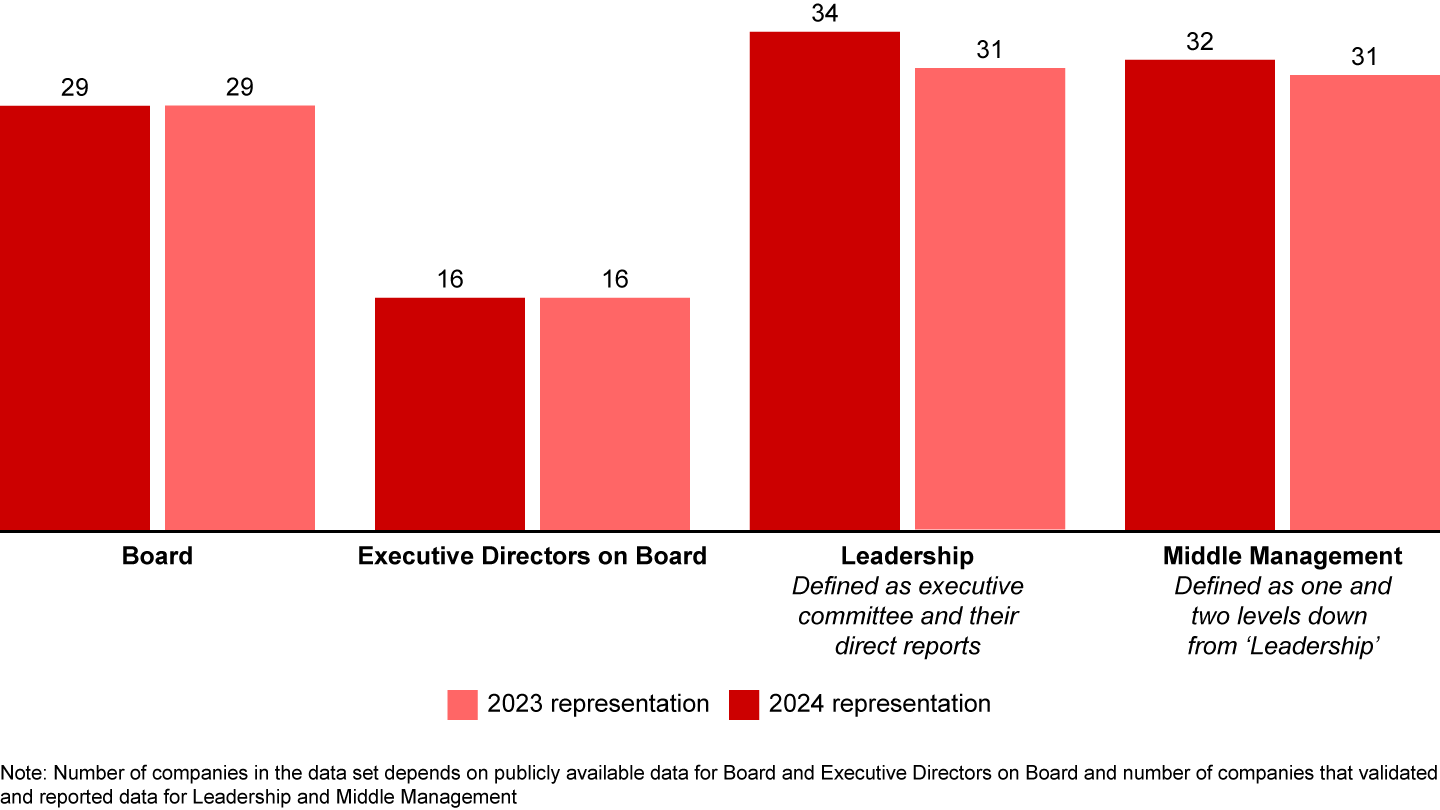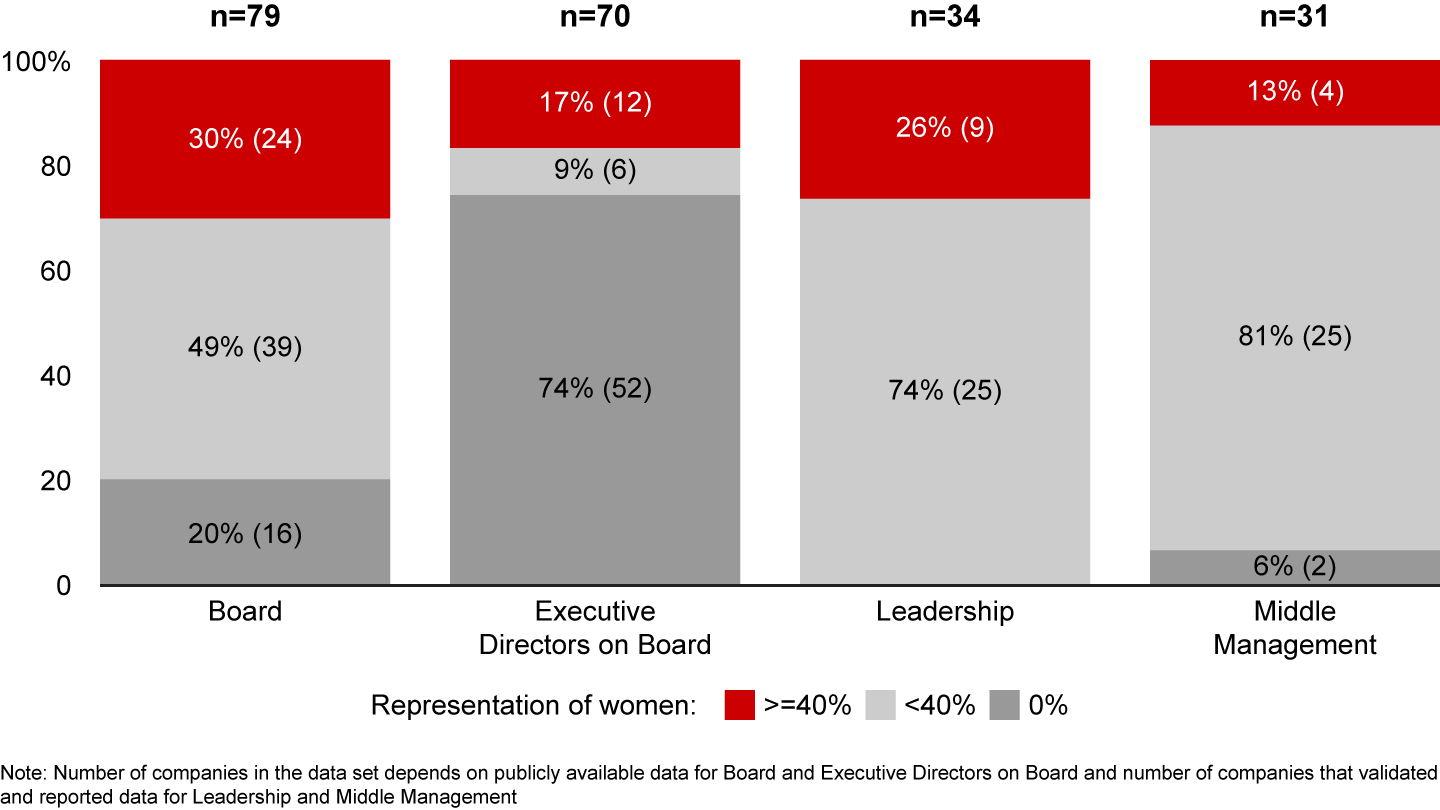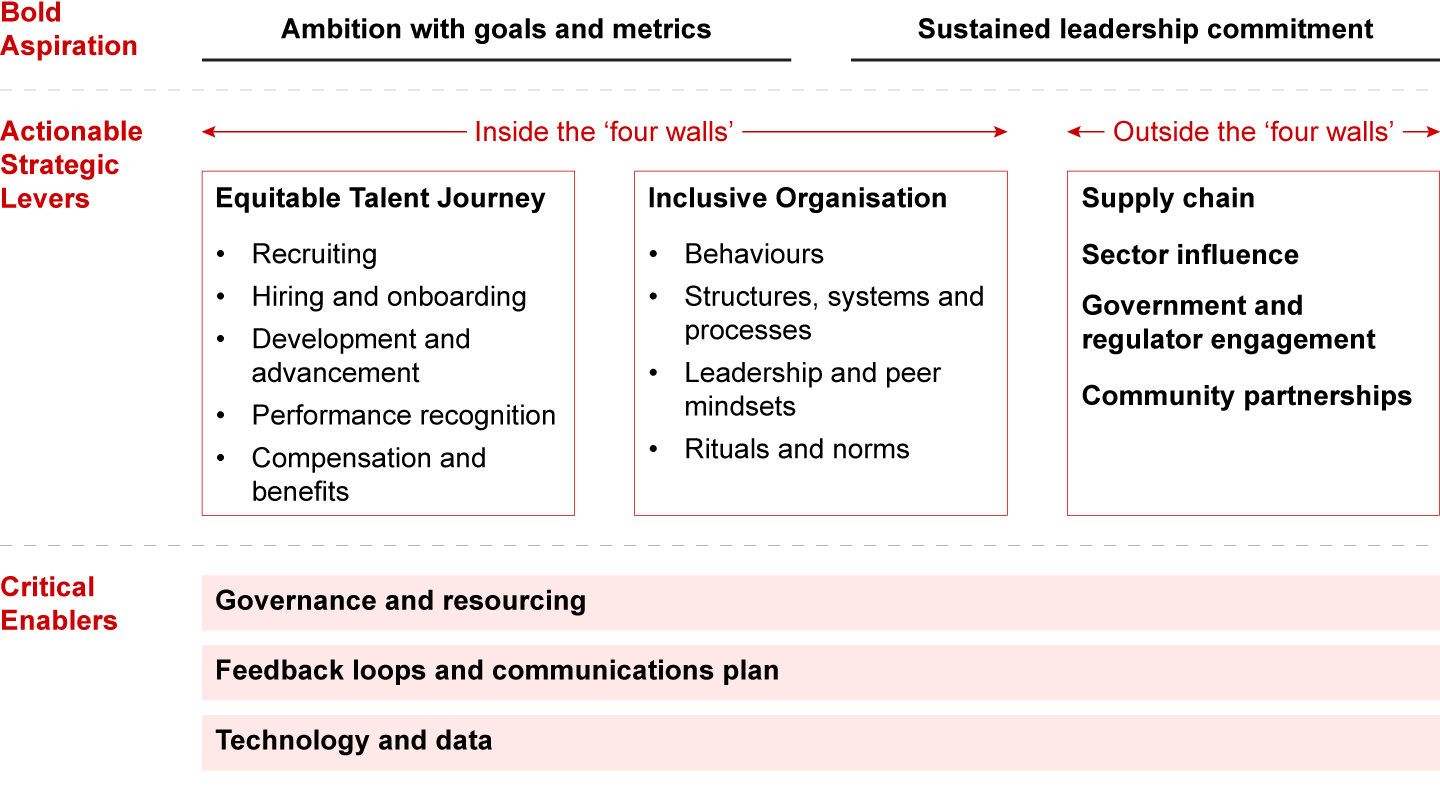Report

Diversity, equality and Inclusion (DEI) is absolutely critical for companies in today’s globalised world. The fact that DEI leads to stronger business outcomes has been proven across:
- Talent performance, as inclusivity helps unlock talent as employees who feel excluded are almost certain to perform at less than their full potential;
- Innovation, as increased diversity and inclusion quadruples an organisation’s capacity for innovation; and
- Sound decision making, with diverse teams making better business decisions approximately 87% of the time.
POWERful Women (PfW) publishes an Annual State of the Nation report to assess the progress on gender diversity in the UK energy sector. This year, Bain & Company collaborated with PfW to gather statistics on female representation among the top 80 energy companies in the UK (based on the most significant employers; estimated to employ, in total, more than 190,000 people).
Gender representation on UK energy sector boards is stagnating.
In 2024, in the top 80 UK energy companies:
- 29% of all board members (executive and non-executive) are women (same as in 2023)
- 16% of executive directors on the board are women (same as in 2023)
- Only three companies (4%) had a female chair of the board, and only four companies (5%) had a female CEO.
This suggests we are still finding it challenging to get women into key decision-making roles—and that progress on representation on boards is slowing. We need to ensure that boards of our energy sector reach gender balance; if not, boards will not be as effective as they could be in leading our sector.

We are making marginal progress on gender representation in leadership and middle management roles.
Though board progress is stagnating, we have seen progress in female representation in leadership roles (defined as the executive committee and their direct reports, based on data from 34 of the top 80 energy companies). In 2024:
- 34% of leadership roles are held by women (up from 31% in 2023).
When it comes to middle management (defined as one and two levels down from ‘leadership,’ data on progress is much less available; only 31 of the top 80 energy companies provided data. From the data available:
- 32% of middle management roles are held by women (marginally up from 31% in 2023).
This suggests there has been improvement, but more efforts are required to continue to build a strong pipeline of future women leaders (and capture more data) if we are to reach a gender-balanced sector.
It is possible to achieve a gender-balanced sector, with leaders already paving the way.
Though progress is slowing (especially at the board level), we believe the 40% targets set by both the FTSE Women Leaders Review and PfW for female representation across various levels are still within reach:
- Adding, on average, just one more woman per board this year can bridge the gap to the 40% target by 2025 set by the FTSE Women Leaders Review.
- Adding, on average, just five additional women to each leadership team by 2030 (less than one per company per year) would mean we could reach the 40% target set by PfW.
We know this is possible because a material number of companies (as highlighted in the figure below) are already reaching this target. These companies prove that concerted efforts on diversity, equity, and inclusion lead to progress.

True progress requires an actionable blueprint that goes beyond representation alone.
From assessing the practices of leading companies, we know what it takes to make progress.
Companies need a blueprint that includes a bold ambition with measurable targets and sustained leadership commitment, an actionable strategy with focussed actions to build an inclusive organisation, and investment in critical enablers including governance, resourcing, and technology and data.

Within this blueprint, it is critical to go beyond representation alone and truly focus on creating an inclusive organisation. Bain & Company’s research found that employees who viewed their organisations as both diverse and inclusive were the most likely to feel comfortable bringing new ideas to the table. In fact, the gains in creative thinking are much higher as inclusion increases in an organisation, compared with the gains from increasing diversity alone.
Ultimately, the specific actions to take need to be tailored to an organisation’s unique context and starting point. In particular, because the factors that drive inclusion vary by population (no single demographic variable cleanly predicts lower levels of inclusion), companies will need to look at employees through an intersectional lens (incorporating geography, demographics, and seniority) to understand where and with what groups specific actions can be taken that will actually advance the goal of greater inclusion for all. To help you get started, in the report, we have outlined in Section 4, some specific actions that can be started now.
With intentional and sustained effort from all of us, we firmly believe we can achieve not just our near-term targets for female representation by 2030, but our ultimate ambition of a gender-balanced energy sector in the UK.


